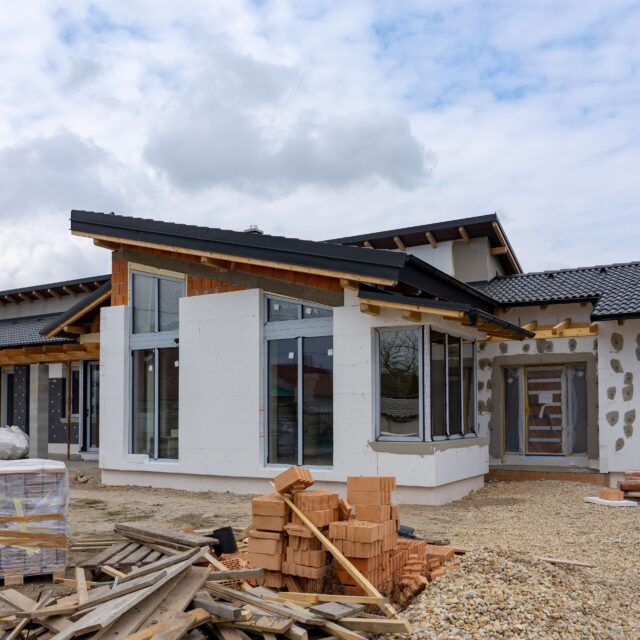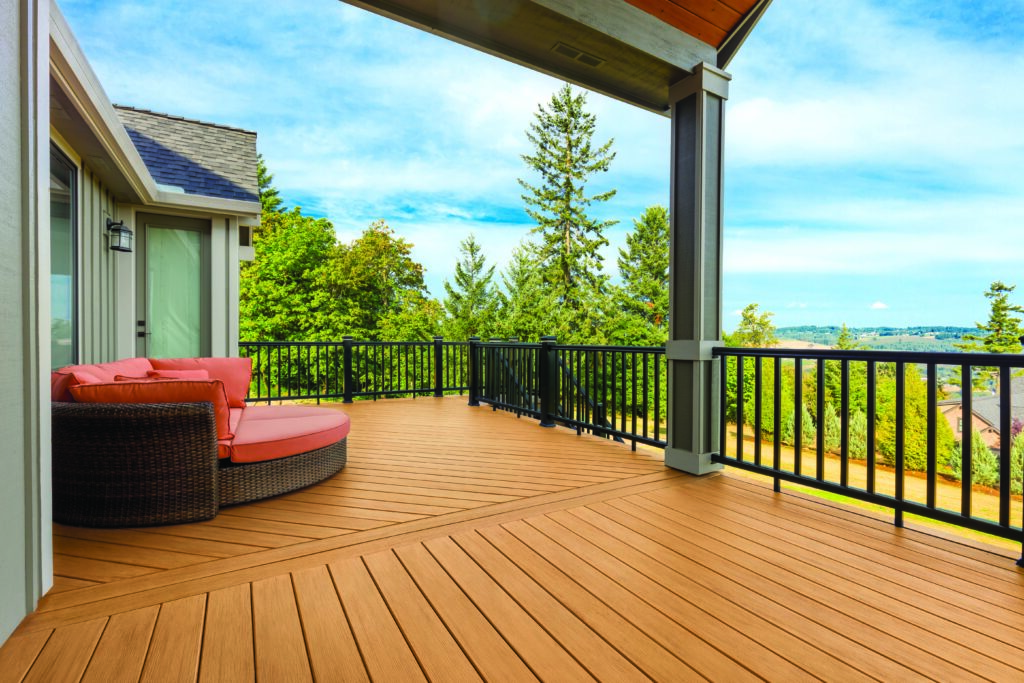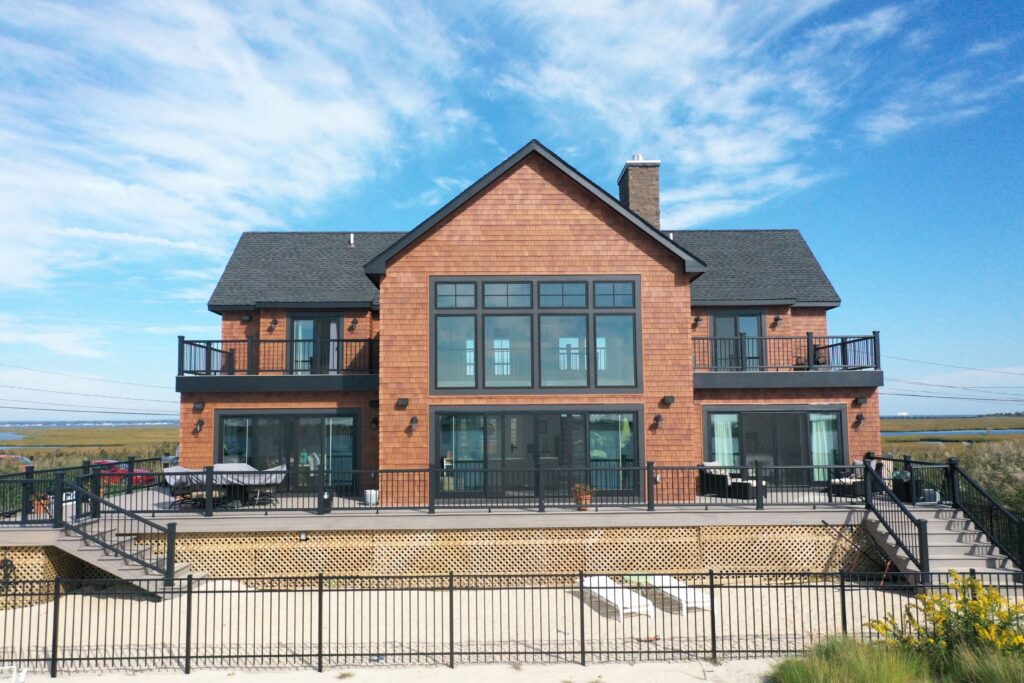Exploring the Role of Composite Building Materials in Construction

- Written by: jlbmdev

In the last few years, composite building materials have become more common in home building projects.
But what are composite materials? Simply put, they’re materials created by combining two or more different materials, each with unique properties, to produce a new material. In the construction industry, this means combining the best of various components to build superior structures.
Let’s explore why and how you should use composite building materials in your construction projects.
Composite materials are designed for longevity, often outlasting traditional building materials. They offer remarkable resistance to common home invaders such as rot, pests, and corrosion. Also, composites stand up exceptionally well to harsh weather conditions, keeping your home safe for years to come and reducing worries about frequent repairs or replacements.
Beyond their strength, composites are designed with a high strength-to-weight ratio. This means they can be incredibly strong and stiff without being excessively heavy, which is beneficial for various construction projects. This combination of strength, lightness, and durability makes composites a powerful and long-lasting choice for modern construction.
One of the most significant advantages of composite materials is their remarkable design flexibility. They can be molded into complex shapes and forms, allowing architects and designers to create different and aesthetically pleasing structures.
This design flexibility can open up new possibilities for residential architecture, allowing for designs that would be difficult or impossible to achieve with traditional materials to be built.
Some composite materials are eco-friendly since they’re made from recycled materials, which can contribute to sustainable building practices. Their durability and extended lifespan also reduce the need for frequent replacements, minimizing waste and promoting a more sustainable built environment.
Additionally, their lightweight nature offers other environmental benefits. This can lead to lower transportation costs and decreased energy consumption during the construction phase, helping make composite materials a more eco-friendly choice for building projects.
Composites are designed for minimal upkeep. Unlike metal alloys, composites don’t rust or corrode, making them an ideal choice for homes in corrosive environments, like those near saltwater. This resistance to corrosion, weathering, and even pests significantly cuts down on the need for regular maintenance and repairs.
For instance, composite trim and siding options require much less upkeep compared to traditional wood. You won’t need to do the frequent staining or sealing that wood requires, just a power wash as part of regular seasonal maintenance.
Even though composite building materials might have a higher initial price tag, they often prove to be a more economical choice in the long run. That’s because their exceptional durability and extended lifespan drastically cut down on maintenance and replacement costs. Also, they can increase your home’s energy efficiency, leading to noticeable savings on your utility bills over time.
What’s more, composites help with cost-effectiveness through more efficient construction. Because they’re often lightweight and customizable, they can be installed faster, which, for example, can be a benefit when you’re installing composite decking. This, along with the potential for less material waste during building, helps offset the initial cost and can lead to overall savings on your project.

Composite building materials have become standard in the construction industry and are used in most projects. They’ve been engineered to be used in several areas.
When people think of composite building materials, they usually think of decks first. Composite decking is an engineered material, typically made from a blend of wood fibers and recycled plastic. This combination creates a durable decking option. One of the benefits of composite decking is that the boards are protected by three- or four-sided polymer caps that effectively prevent water damage, though some uncapped options are also available.
Brands like TimberTech and Azek have helped change outdoor living with durable, low-maintenance composite decking that resists fading, warping, and splintering.
Composite siding is an exterior building material designed to cover and protect the outside of your house while also enhancing its aesthetic appeal. These typically include wood fibers, cement, and polymers. This gives composite siding several advantages, making it a popular choice for homeowners. It’s known for its impressive durability, resisting issues like rot, warping, fading, and chipping.
Furthermore, your composite siding options are generally low-maintenance, often requiring only an occasional cleaning to maintain their appearance. They’re also available in a wide variety of colors, textures, and designs, like Tando siding or Wolf. This allows them to mimic the look of natural wood, stucco, or stone, and provide versatility to match your home’s style.
When professionally installed, rubber composite shingles are capable of withstanding strong winds up to 110 miles per hour and offer exceptional weather resistance. This also makes them an excellent choice for areas with extreme weather conditions, including hail up to 2 inches in diameter.
One of the most appealing aspects of rubber composite shingles is their longevity. On average, you can expect these shingles to last for 30 years or even longer if they’re properly maintained.
Composite doors feature a solid timber core encased in materials like uPVC, laminate, or Glass Reinforced Plastic (GRP), also known as fiberglass. This unique construction makes them one of the best composite materials for remodeling since they’re durable and low-maintenance options, as they effectively resist weather and most general wear and tear.
While generally less expensive than solid wooden doors, composite doors are still not a cheap alternative. Another point to consider is that repainting them can be challenging if they’re damaged or if you simply want to change their color.
Composite windows are a newer addition to the composite building materials market. They’re designed to give you the classic look of wood without the upkeep. These windows are crafted from materials similar to those found in composite decking, so they’re both strong and low-maintenance.
Thanks to their resistance to fading, staining, scratching, and mold growth, composite windows are suitable for most climates. They’re also available in a wide array of textures and colors, giving you plenty of design flexibility. The final price for composite windows will depend on their size and style.
If you’re looking for more information on what’s the best material to use for your project, we created a blog series to help you make your decision.

As homeowners and builders prioritize sustainability, durability, and performance, the demand for composite materials is increasing. Companies’ research and development teams are actively searching for the best composite materials for remodeling by exploring ones made from natural fibers, further enhancing their sustainability credentials.
While the future is positive for composite building materials, addressing challenges such as the initial cost, establishing industry-wide standards, and making sure people can hire experts who know how to install composite materials will be important to its continued success.
Looking to add composite building materials to your next home remodeling project?